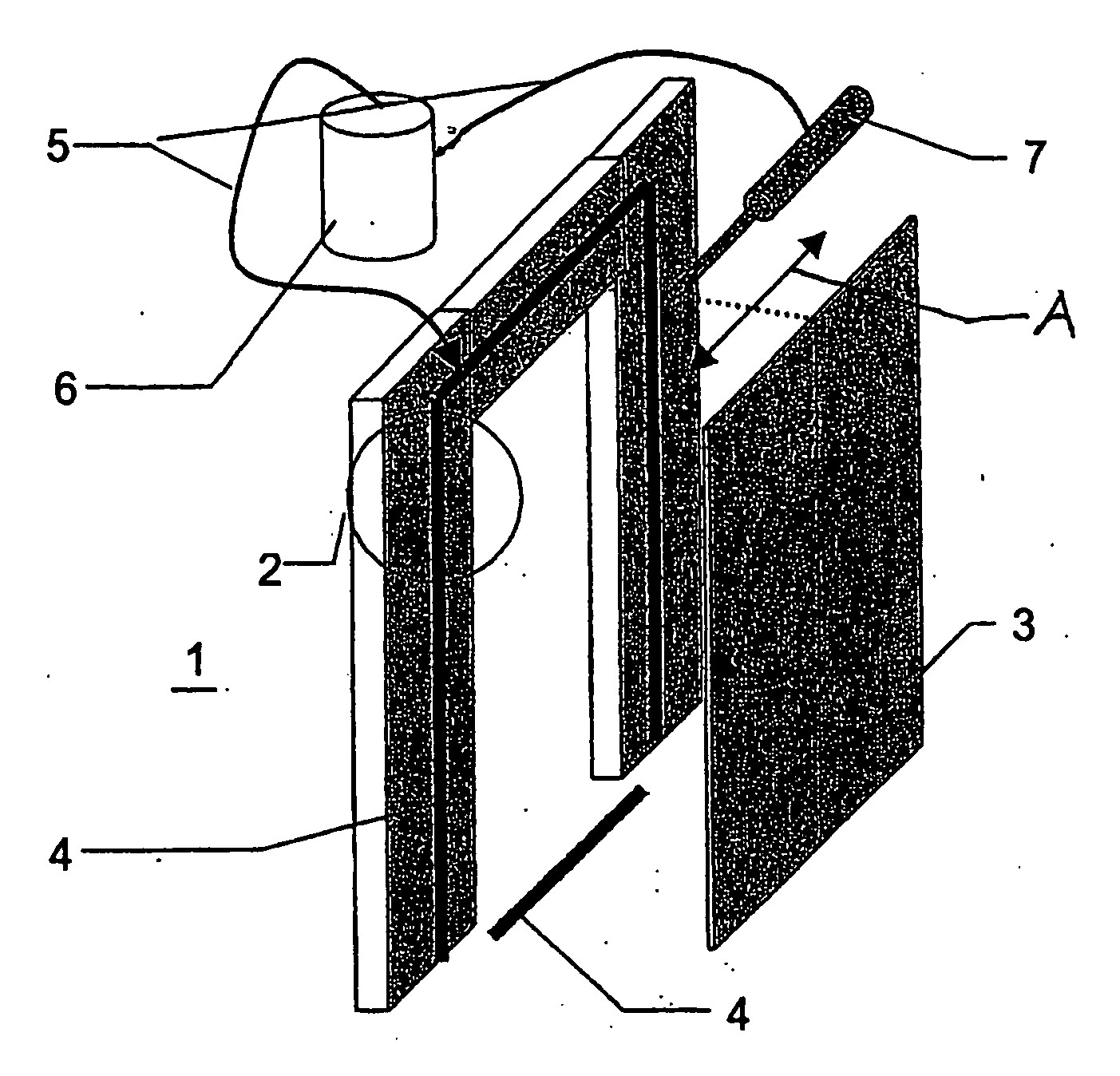Device for sealing a gap between car door and car wall in an elevator car
- Summary
- Abstract
- Description
- Claims
- Application Information
AI Technical Summary
Benefits of technology
Problems solved by technology
Method used
Image
Examples
Embodiment Construction
[0018] As shown in FIGS. 1 and 2, an elevator car 1 has a car wall denoted by 2 and an associated car door denoted by 3. The door 3 moves along a path parallel to the wall 2 as shown by an arrow A to open and close a door opening B formed in the wall. A sealing strip 4 made of resilient material is arranged around the car door opening B. The sealing strip 4 consists of an upper part and a lower part (in the threshold), which have a generally annular cross-section in a relieved state as illustrated in FIG. 2 by dashed lines. The sealing strip 4 consists of a hollow body 8 that is retained in a groove C formed in a surface of the wall 2 facing the door 3. When the sealing strip 4 is in an actuated state, as shown in solid lines in FIG. 2, it resiliently expands in a balloon-like manner to form a first wall portion 41 and a parallel second wall 42 sealingly contacting opposing walls of the groove C. A third wall portion 43 sealingly contacts a bottom wall of the groove C and a fourth w...
PUM
 Login to View More
Login to View More Abstract
Description
Claims
Application Information
 Login to View More
Login to View More - R&D
- Intellectual Property
- Life Sciences
- Materials
- Tech Scout
- Unparalleled Data Quality
- Higher Quality Content
- 60% Fewer Hallucinations
Browse by: Latest US Patents, China's latest patents, Technical Efficacy Thesaurus, Application Domain, Technology Topic, Popular Technical Reports.
© 2025 PatSnap. All rights reserved.Legal|Privacy policy|Modern Slavery Act Transparency Statement|Sitemap|About US| Contact US: help@patsnap.com



